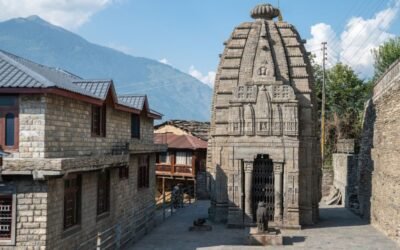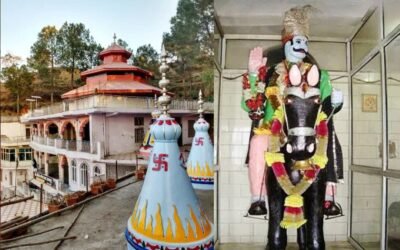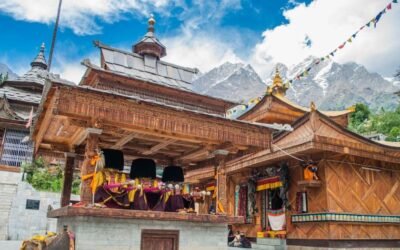Where the flute echoes above the clouds, and the Pandavas left their prayer in stone
At a breathtaking 12,000 feet (3,895 meters) above sea level, nestled in the Rora Valley of Kinnaur, lies Yulla Kanda—home to the world’s highest temple dedicated to Lord Krishna. Surrounded by a sacred alpine lake, this remote shrine is a spiritual and trekking marvel, where myth, devotion, and Himalayan grandeur converge in silence and snow.
🌄 Location & Trekking Route
- Region: Yulla Khas village, near Urni, Kinnaur District, Himachal Pradesh
- Altitude: ~3,895 meters (12,778 feet)
- Trek Distance: ~12 km one way from Yulla Khas
- Trek Duration: 3–4 days (round trip)
- Best Time to Visit: May to October (avoid monsoon and winter snow)
- Base Access:
- From Shimla to Tapri (~200 km)
- From Tapri to Yulla Khas by HRTC bus or taxi
- Trek begins from Yulla Khas village
🕉️ Deity & Worship
The temple is dedicated to Lord Krishna, enshrined in a wooden temple built in the middle of a glacial lake. According to legend:
- The Pandavas created the lake during their exile and built the temple to honor Krishna
- The temple is simple yet sacred, with wooden carvings and prayer flags fluttering in the wind
- During Janmashtami, the temple becomes a hub of devotion, with rituals led by Buddhist Lamas and Hindu priests, reflecting Kinnaur’s syncretic culture
🧢 The Floating Cap Ritual
A unique tradition here involves floating a Kinnauri cap upside down in the lake:
- If it reaches the opposite shore without sinking, it’s a sign of good fortune and peace
- If it sinks, it’s taken as a warning to tread carefully in the year ahead
🏛️ Architecture & Setting
- A wooden temple with traditional Kinnauri craftsmanship, standing on a rocky island in the lake
- Surrounded by snow-capped peaks, Bhojpatra trees, and wildflower meadows
- The lake reflects the sky and mountains, creating a mirror of divinity and solitude
📜 Mythological & Cultural Significance
- Believed to be established by the Pandavas, the site is revered as a Mahabharata-era tirtha
- The Bushahr king Kehri Singh initiated the Janmashtami fair, a tradition that continues today
- The temple is a symbol of harmony, where Hindu and Buddhist traditions coexist in reverence
🎉 Festivals & Celebrations
- Janmashtami: Celebrated with folk songs, rituals, and floating caps
- Annual Pilgrimage: Locals from Kalpa, Pangi, and Ribba trek across Kashang Pass to reach the temple
- Daily Worship: Simple offerings of water, flowers, and silence
🏞️ Trek Highlights
- Forests of Bhojpatra (Himalayan birch)—once used for writing scriptures
- Alpine meadows and glacial streams
- Panoramic views of Kinnaur Kailash and the Sutlej Valley
- Camping under starlit skies, with the temple glowing in moonlight
🙏 Spiritual Experience
The Yulla Kanda Krishna Temple is not just a shrine—it is a skyward sanctuary, a place where faith climbs with every step, and Krishna’s flute plays in the silence of snow and stone. As you stand by the lake, with the wind whispering mantras and the peaks watching in stillness, you feel the presence of a god who smiles through clouds and blesses through echoes. It is a temple where myth becomes mountain, and the **soul finds its song in the breath of the Himalayas.




